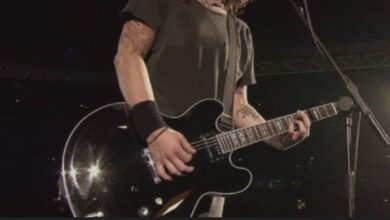Metallica’s Legendary 1991 Moscow Performance: A Historic Concert for 1.6 Million Fans Amid Soviet Turmoil
Certainly! Let’s delve into the monumental Metallica performance at the “Monsters of Rock” festival held in Moscow in 1991, which remains one of the most staggering gatherings in the history of live music events.
In the wake of the Soviet Union’s dissolution, Western music started permeating the once tightly sealed borders of the USSR, bringing with it a surge of cultural exchange that was previously unimaginable. Amidst this transformative era, the “Monsters of Rock” festival was scheduled in Moscow, marking a significant event in the annals of rock music. It was not merely a concert but a symbol of changing tides, an epitome of freedom’s loud arrival in a place that had long suppressed such expressions.
The festival took place at Tushino Airfield, a location that quickly transformed from an ordinary airfield to a massive concert venue teeming with eager fans. On September 28, 1991, over 1.6 million people congregated at this open field, a gathering so large it was visible from space, according to some reports. The magnitude of the crowd was unprecedented for any event of this kind, setting a record in the music history books that would be tough to surpass.
Metallica, already a colossal force in the music world by 1991, was at the forefront of this event. They shared the stage with other rock giants such as AC/DC and Pantera, making it a lineup that was irresistibly alluring to rock enthusiasts. However, it was Metallica’s performance that many recall as the standout moment of the festival.
The atmosphere was electric and somewhat chaotic, filled with a mix of excitement and the nervous energy of a country on the brink of monumental change. For many young Soviets, this concert was not just an opportunity to see their musical idols live but also a first taste of the freedom and rebellion embodied by rock music. The scene was a vast sea of people, a mosh pit stretching as far as the eye could see, with Soviet military personnel dotted around, providing security while perhaps experiencing Western rock for the first time themselves.
Metallica took the stage with a ferocity that matched the revolutionary fervor of the time. They opened their set with “Enter Sandman,” a track that had quickly become a global anthem. The sound of James Hetfield’s opening riff rippled through the massive crowd, setting off a wave of excitement that could almost be felt physically. The setlist included hits like “Creeping Death,” “Fade to Black,” and “Whiplash,” each song fueling the crowd’s fervor further.
The performance was not just about the music; it was a cultural exchange. Hetfield, between songs, reached out to the audience, breaking not just the physical but also the ideological barriers that had existed for decades. This interaction between band and audience was poignant, as many in the crowd were experiencing live Western rock music firsthand, making it a formative moment for thousands.
The logistical challenges of the event were monumental. Organizing a concert of such scale, especially in a country where such events had not been common, required meticulous planning and unprecedented levels of security. Despite these challenges, the event was largely peaceful, a testament to the universal language of music and its ability to unite people.
Post-concert, the impact of Metallica’s performance in Moscow was profound. It inspired a generation of Russian youth, catalyzing the growth of rock and metal scenes in Russia. The event has since been looked back upon as a critical moment in the evolution of the Russian music scene and a landmark event in the global music industry.
The “Monsters of Rock” Moscow concert is more than just a footnote in the history of rock music; it’s a landmark event that demonstrated the unifying power of music across borders and ideologies. Metallica’s performance that day wasn’t just a display of musical prowess; it was a harbinger of change, a soundtrack to the end of an era, and the loud, roaring welcome of a new one. It remains, to this day, a pivotal point in the timeline of not just rock music, but also of cultural transformation.



